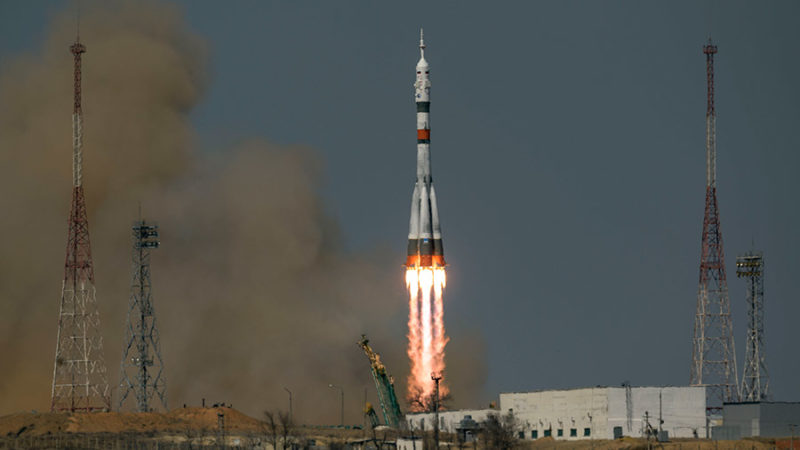
For only the second time in six months, Russia is attempting an “ultra-fast” launch, rendezvous and docking of a crewed vehicle to the International Space Station (ISS). Three-time cosmonaut Oleg Novitsky, “rookie” spacefarer Pyotr Dubrov and recently-announced NASA veteran Mark Vande Hei roared aloft aboard Soyuz MS-18 from Site 31/6 at the Baikonur Cosmodrome in Kazakhstan at 12:42 p.m. local time (3:42 a.m. EDT) Friday to begin a challenging mission which promises science, spacewalks and a significantly larger space station. And with Russia’s exact crewing plans for the fall as-yet unannounced, there remains the very real possibility that Vande Hei may spend a full year in orbit.
This could hardly have been further from many minds until comparatively recently, for Vande Hei was named to this mission only last month, as NASA seeks to hedge against the risk of delays to its Commercial Crew vehicles disrupting a continuous U.S. presence on the ISS. However, the 54-year-old retired U.S. Army colonel logged 168 days of spaceflight experience—and more than 20 hours of Extravehicular Activity (EVA) time on four career spacewalks—during a six-month stay at the station between September 2017 and February 2018.
Following his return to Earth, Vande Hei served as assistant to the Chief of the Astronaut Office for EVA and Robotics, a post he handed over to fellow astronaut Steve Bowen last summer, when he began training as Kate Rubins’ backup for the Expedition 63/64 increment. As such, in spite of his recent assignment, Vande Hei is by no means a newcomer to Soyuz systems.
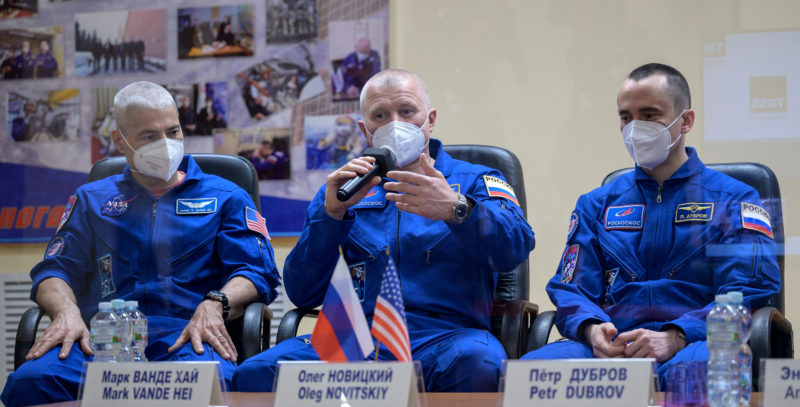
Commanding today’s flight aboard Soyuz MS-18 is 49-year-old retired Russian Air Force colonel Oleg Novitsky, who has already spent more than 340 days in space on a pair of long-term ISS increments in October 2012 through March 2013 and more recently from November 2016 through June 2017. Rounding out the crew is 43-year-old first-time flyer Pyotr Dubrov, a civilian software engineer selected as a cosmonaut in 2012.
Until Vande Hei’s assignment last month, the third seat aboard Soyuz MS-18 was expected to be taken by another of Dubrov’s 2012 classmates, civilian engineer Sergei Korsakov, who now looks likely to be bumped to another mission further downstream.
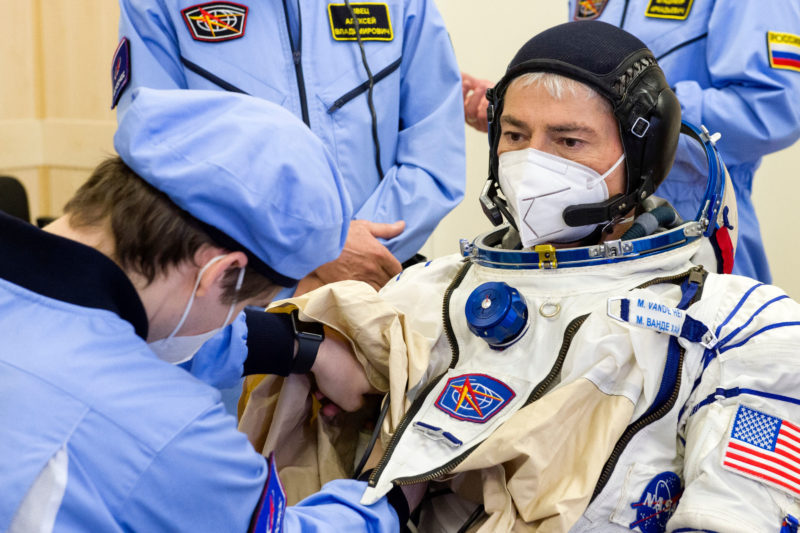
Backing up Novitsky, Dubrov and Vande Hei is an all-veteran backup team, with no less than six previous missions, over 1,100 days of cumulative spacefaring experience and more than 47 hours of EVA time between them. Anton Shkaplerov, the backup commander, has logged three long-duration ISS increments, with fellow cosmonaut Oleg Artemyev having flown two and NASA’s “Artemis Team” member Anne McClain one.
Fueling of the Soyuz MS-18 spacecraft and final examinations for the prime and backup crews wrapped up last month, with all six astronauts and cosmonauts arriving at Baikonur on 26 March. Last Tuesday, the 162.4-foot-tall (49.5-meter) Soyuz-2.1a booster was rolled horizontally out of Baikonur’s integration hall and out to Site 31/6. As the world approaches the 60th anniversary of the first human spaceflight on 12 April, this mission was touchingly named in honor of Yuri Gagarin.
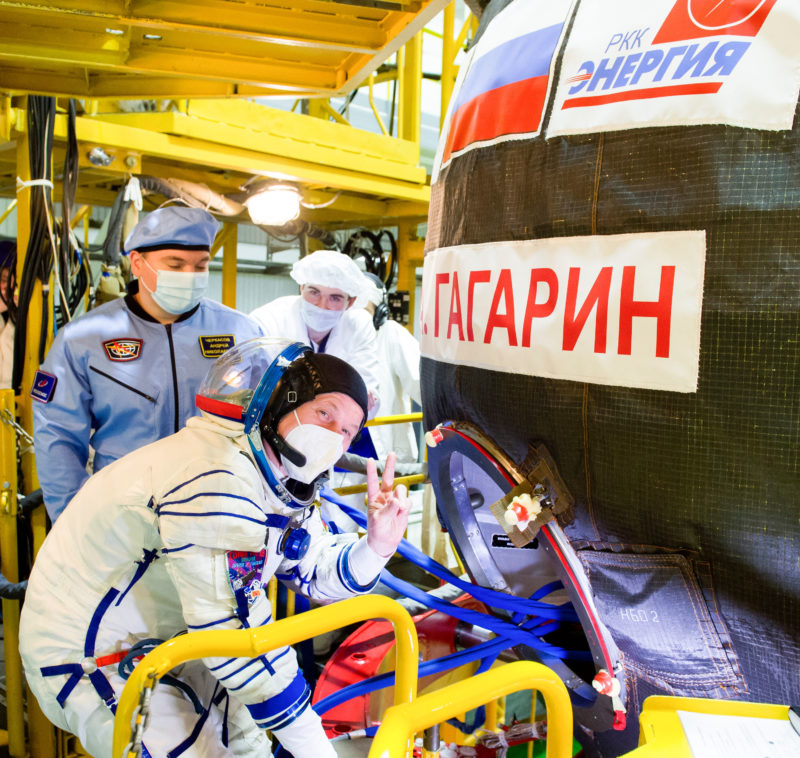
Early Friday, the prime and backup crews were awakened about 8.5 hours prior to launch. They showered and were disinfected, before submitting to microbial sampling in support of ongoing ISS research, and ceremonially autographed their doors in Baikonur’s Cosmonaut Hotel. A customary blessing from a Russian Orthodox priest was followed by a bus ride out to Site 254 to begin donning their Sokol (“Falcon”) launch and entry suits, then the 25-minute transfer out to the pad.
Novitsky was inserted into the center commander’s couch aboard Soyuz MS-18, with Dubrov taking his position in the left-side seat as Flight Engineer-1 and Vande Hei assuming the Flight Engineer-2 seat on the right.
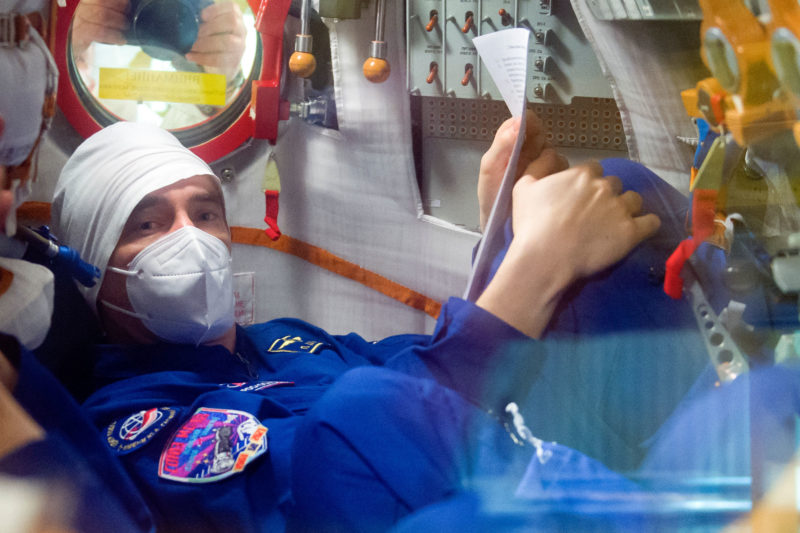
Already loaded aboard the Soyuz-2.1a was a highly refined form of rocket-grade kerosene, known as “RP-1”, with liquid oxygen being continuously topped-off until near T-0, to ensure that boiled-off cryogens were kept replenished and close to levels of flight readiness. Fifteen minutes before liftoff, the Launch Abort System (LAS) was armed and transitioned to Automatic Mode. At the same time, the crew was instructed to close their helmet visors.
At T-5 minutes, Novitsky’s controls were activated and internal avionics aboard Soyuz MS-18 were spooled-up to monitor booster systems throughout ascent. From within the control bunker, the “launch key”—an actual, physical key—was inserted to enable the booster’s ordnance. Propellant tanks were pressurized and the Soyuz-2.1a transitioned from ground support utilities onto internal power.
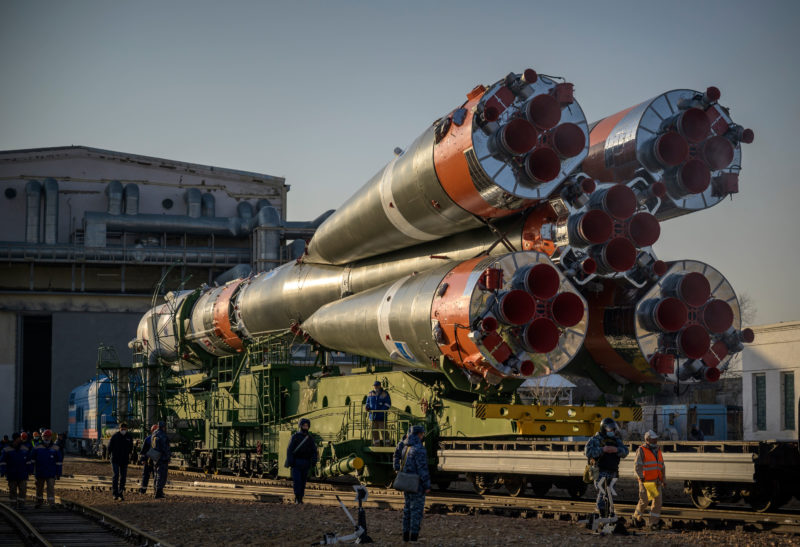
Shortly before launch, the ISS itself passed directly over Baikonur. At ten seconds, the turbopumps of the RD-108A first-stage engine and the RD-107A engines of the four tapering, strap-on boosters attained full speed. Five seconds later, the engines themselves ignited and ramped up to full power, before Site 31/6’s fueling tower retracted and Soyuz MS-18 soared aloft.
With the central core and four tapering boosters burning hot and hard, a total of five engines punched out a combined 930,000 pounds (422,000 kg) of thrust at liftoff and heaved Novitsky, Dubrov and Vande Hei away from Earth and onto a two-orbit “ultra-fast rendezvous” to reach the ISS in just over three hours.
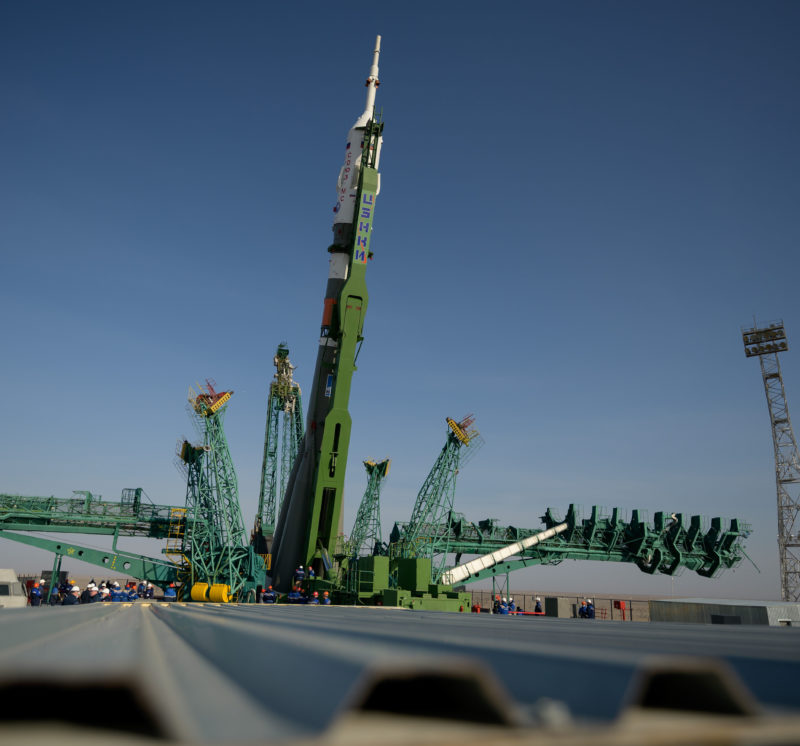
Two minutes into the flight, the tapering boosters were jettisoned, by which time Soyuz MS-18 was already traveling in excess of 1,100 mph (1,770 km/h). With the boosters gone, the core continued to fire, until the RD-108A engine burned out a little under five minutes into the flight. At this point, the crew had reached an altitude of 105.6 miles (170 km).
The rocket’s third stage then ignited its single engine and the core was jettisoned shortly afterwards. The third stage pushed Soyuz MS-18 to a velocity of over 13,420 mph (21,600 km/h) and upon shutdown, at eight minutes and 43 seconds after liftoff, the spacecraft had attained a preliminary orbit with an apogee of about 143 miles (230 km) and a perigee of 118 miles (190 km), inclined 51.66 degrees to the equator.
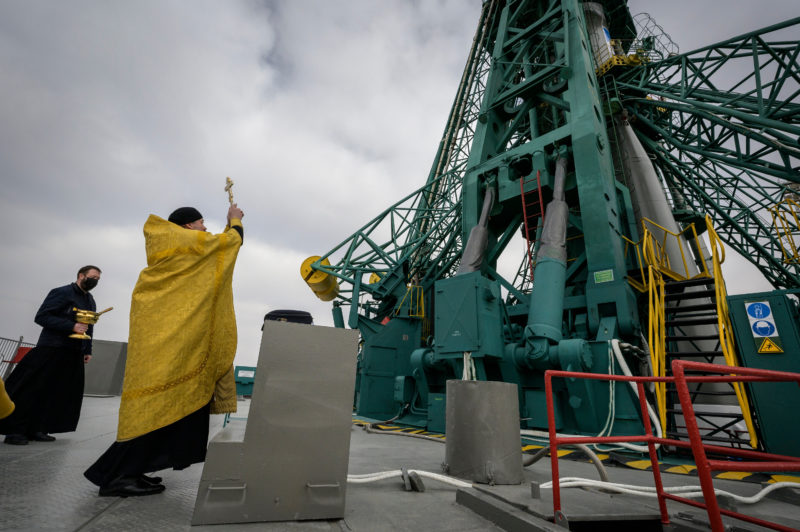
As is customary, a small stuffed toy rode uphill with the crew, providing a sort of “microgravity indicator” to announce the onset of weightlessness. In Soyuz MS-18’s case, it took the form of a toy kitten from the long-standing Russian cartoon “A Kitten Named Woof”, which Novitsky revealed was observing its 45th anniversary in 2021.
Following orbital insertion, the crew deployed Soyuz MS-18’s solar arrays and communications and navigational antennas, before settling down for a condensed phase of rendezvous maneuvers to guide them towards the ISS. As this article was being prepared, docking at the nadir-facing Rassvet module was due to occur around 4:07 p.m. Baikonur time (7:07 a.m. EDT), a little more than three hours and two orbits after liftoff.
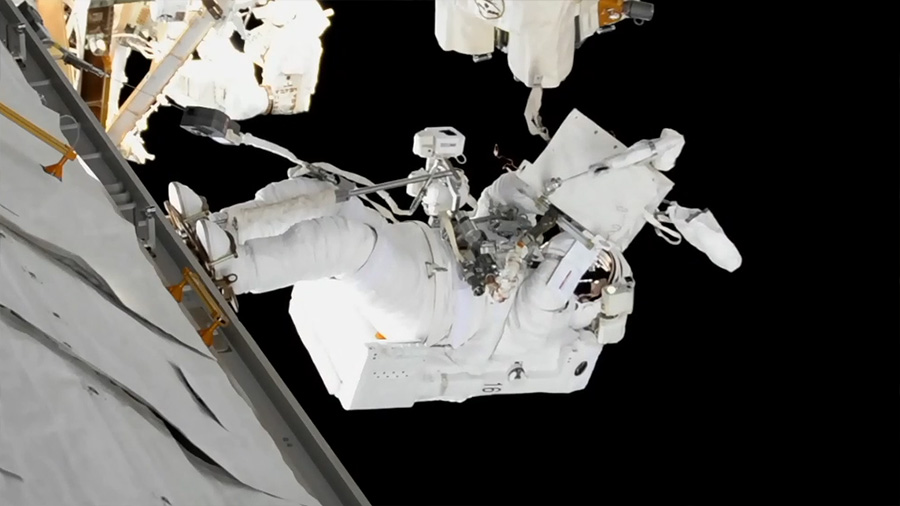
Upon opening the hatches, the newcomers will be greeted by the seven-member Expedition 64 crew, headed by Commander Sergei Ryzhikov. He and crewmates Sergei Kud-Sverchkov and Kate Rubins arrived at the station last October aboard Soyuz MS-17 and will return to Earth next week. The remainder of their increment, the Crew-1 team of Mike Hopkins, Victor Glover, Shannon Walker and Soichi Noguchi, have been aboard the ISS since mid-November and their own stay is set to end later in April.
Coming up on 15 April is the transfer of authority from Ryzhikov to Walker, who uniquely will helm the station for less than two weeks until she returns home on the 28th, after which Novitsky will assume command of Expedition 65.
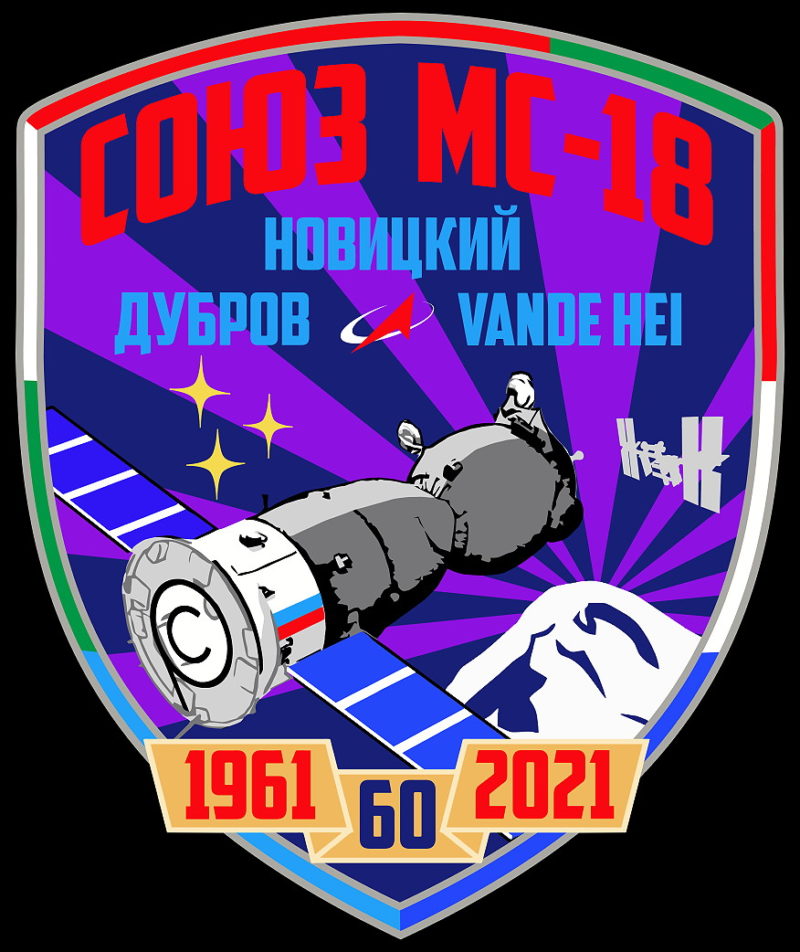
And with the Crew-2 team of NASA astronauts Shane Kimbrough and Megan McArthur, Japan’s Aki Hoshide and Frenchman Thomas Pesquet due to ride uphill aboard Dragon Endeavour on 22 April, this will ensure a full seven-person increment throughout the summer and fall.
And 2021 is shaping up to be nothing if not ambitious. Current plans call for two Soyuz missions in October and December, the first of which may include a Russian film director and actress (alongside veteran cosmonaut Anton Shkaplerov) and the second potentially featuring a pair of spaceflight participants (alongside veteran cosmonaut Aleksandr Misurkin). If this situation comes to pass, it raises the possibility that Shkaplerov may well remain aboard the ISS through April 2022, with Vande Hei and Dubrov accompanying him for a year-long stay.
Should a year-long mission for Vande Hei and Dubrov come to pass, it certainly promises to a busy one. Russia’s long-awaited Nauka lab is slated to arrive in July, requiring as many as seven EVAs to prepare for its installation and the activation of the European Robotic Arm (ERA). To make way for Nauka, the long-serving Pirs module will be detached from the station via the Progress MS-16 cargo ship and destructively deorbited in the upper atmosphere.
Over the course of the next year, as many as four Russian Progress cargo ships, three SpaceX Dragons and a pair of Northrop Grumman Corp. Cygnuses are slated to deliver equipment, payloads and supplies to the ISS. Added to this mix, Boeing’s troubled CST-100 Starliner is due to make its second test flight to the station in the summer, following by a crewed mission later this fall. A single U.S. spacewalk is currently timelined for mid-June to install the first set of ISS Roll-Out Solar Arrays (iROSAs), with Kimbrough and Hoshide having recently completed training for this task.
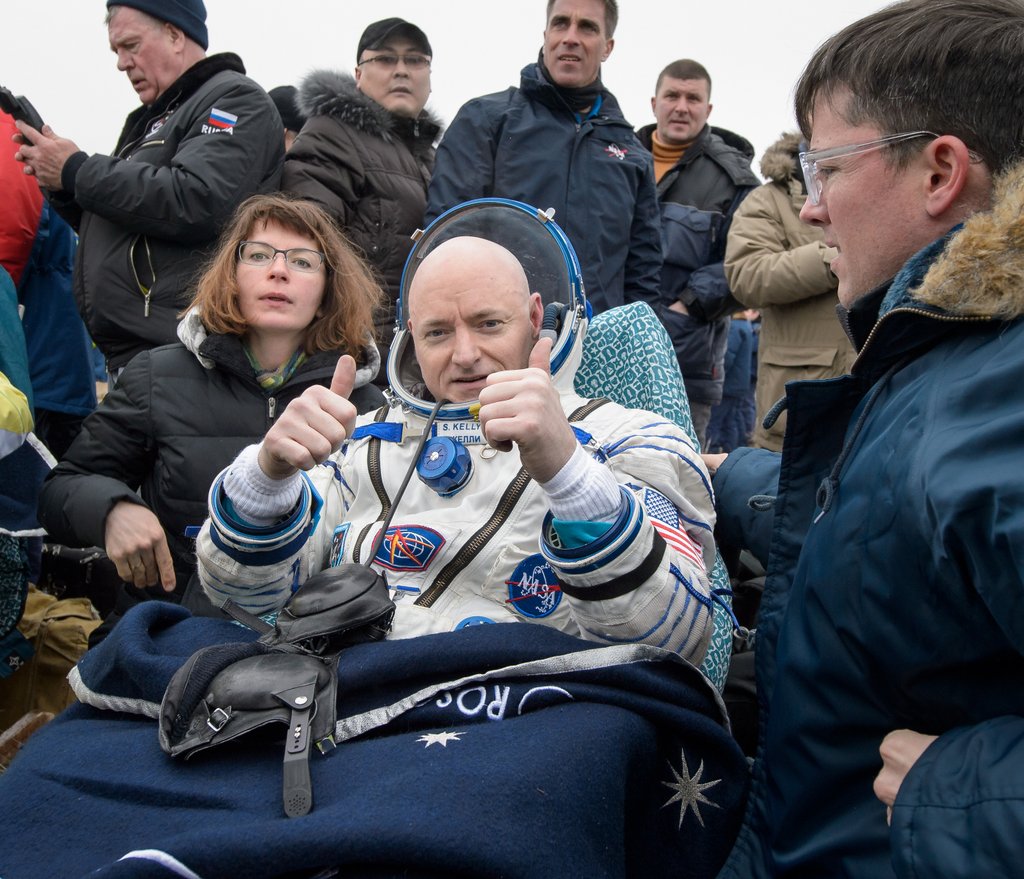
Spending up to a year in orbit aboard the ISS was first demonstrated by U.S. astronaut Scott Kelly and Russian cosmonaut Mikhail Kornienko, whose 340-day mission came to a successful conclusion in March 2016. Although ultra-long missions had been done before—with cosmonauts Vladimir Titov, Musa Manarov, Sergei Krikalev, Sergei Avdeyev and Valeri Polyakov having spent periods of up to 14 months aboard Russia’s Mir complex in the 1980s and 1990s—the stay of Kelly and Kornienko marked the first year-long space mission of the 21st century.
Since then, in September 2017 Peggy Whitson wrapped up almost ten months in orbit and in February 2020 Christina Koch logged a new record of 328 days for the longest single space mission ever undertaken by a woman. And added to that list, her Expedition 60/61 crewmate Drew Morgan chalked up almost nine months on his own ISS increment.




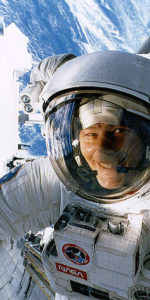
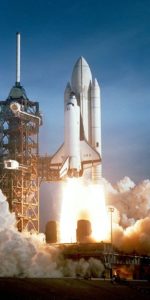
10 Comments
10 Pings & Trackbacks
Pingback:Crew-1 Completes Night Splashdown, Wraps Up 167-Day Mission « AmericaSpace
Pingback:Atlas V, Starliner Set for Historic Space Station Launch on Friday « AmericaSpace
Pingback:Atlas V, Starliner Set for Historic Space Station Launch on Friday
Pingback:Starliner Valve Issue Delays OFT-2, Next Launch Attempt TBD
Pingback:Starliner Valve Issue Delays OFT-2, Next Launch Attempt TBD « AmericaSpace
Pingback:NG-16 Cygnus Launches, Honors Challenger Veteran, Heads to Space Station « AmericaSpace
Pingback:NG-16 Cygnus Launches, Honors Challenger Veteran, Heads to Space Station
Pingback:After Month at Space Station, CRS-23 Dragon Undocks, Heads Home « AmericaSpace
Pingback:After Month at Space Station, CRS-23 Dragon Undocks, Heads Home
Pingback:After Month at House Station, CRS-23 Dragon Undocks, Heads Dwelling « AmericaSpace - Technology News